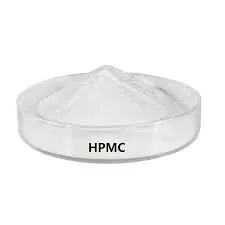
სექ . 19, 2024 01:50 Back to list
hpmc for tile adhesive
Understanding HPMC for Tile Adhesive Properties and Benefits
Hydroxypropyl Methylcellulose (HPMC) is a versatile cellulose ether widely used in various construction applications, particularly in tile adhesive formulations. Originating from natural cellulose, HPMC is modified to enhance its performance characteristics, making it an ideal choice for numerous applications in the construction industry.
Understanding HPMC for Tile Adhesive Properties and Benefits
Moreover, HPMC increases the adhesion strength of tile adhesives, contributing significantly to the overall durability of the installation. When tiles are applied using HPMC-enhanced adhesives, they exhibit improved resistance to shear forces, which is particularly important in high-traffic areas or environments subject to thermal expansion and contraction. This increased adhesion results in a lower likelihood of tiles loosening or cracking over time, thereby extending the lifespan of the installation.
hpmc for tile adhesive

Another advantage of using HPMC in tile adhesives is its ability to enhance the thixotropic properties of the mortar. Thixotropy refers to the material's ability to become less viscous when subjected to shear stress, allowing the adhesive to flow smoothly during application while maintaining stability and preventing slumping once it has been applied. This characteristic is particularly beneficial for vertical tile installations, where gravity can cause standard adhesives to slide or slump.
HPMC is also recognized for its excellent compatibility with a variety of other components typically found in tile adhesive formulations, including cement, fillers, and other additives. This compatibility allows manufacturers greater flexibility in creating custom formulations tailored to specific applications, whether for indoor or outdoor use, and for different types of tiles, including ceramic, porcelain, or natural stone.
Environmental considerations are also increasingly important in the construction sector. HPMC is derived from renewable natural resources, making it a more sustainable option compared to some synthetic additives. While it provides enhanced performance features, the environmental impact associated with its production and use is relatively low, aligning with the industry's shift towards more sustainable practices.
In summary, Hydroxypropyl Methylcellulose (HPMC) is a crucial component in tile adhesive formulations due to its ability to improve workability, enhance adhesion strength, and provide thixotropic properties. Its compatibility with various materials and sustainability credentials further cement its position as a preferred choice among manufacturers. As the demand for high-quality tile installations continues to rise, understanding the role of HPMC can help craftsmen and builders select the right products for their projects, ensuring durable and visually appealing results. Whether for residential or commercial applications, incorporating HPMC in tile adhesives can lead to superior performance, longevity, and overall satisfaction for end-users.
-
Versatile Hpmc Uses in Different Industries
NewsJun.19,2025
-
Redispersible Powder's Role in Enhancing Durability of Construction Products
NewsJun.19,2025
-
Hydroxyethyl Cellulose Applications Driving Green Industrial Processes
NewsJun.19,2025
-
Exploring Different Redispersible Polymer Powder
NewsJun.19,2025
-
Choosing the Right Mortar Bonding Agent
NewsJun.19,2025
-
Applications and Significance of China Hpmc in Modern Industries
NewsJun.19,2025







